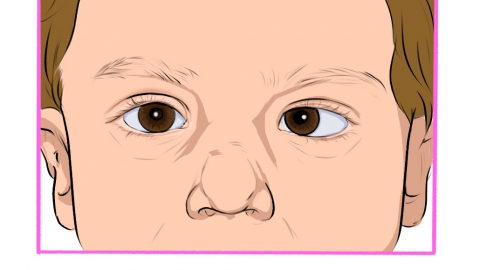How to treat crossed eyes
Strabismus, commonly known as "crossed eyes," usually refers to esotropia. In most cases, esotropia may be caused by congenital abnormalities in extraocular muscle development, prolonged near-work in children, uncorrected refractive errors, comitant esotropia, or paralytic esotropia. It is recommended to seek timely medical attention, identify the underlying cause, and then improve the condition under a doctor's guidance through general treatments, medications, surgery, etc. Specific analyses are as follows:

1. Congenital abnormality of extraocular muscles: At birth, an imbalance in the strength of extraocular muscles—such as one muscle being too strong or too weak—can cause inward deviation of the eye. Early surgical intervention is required, such as weakening or strengthening procedures on the extraocular muscles. By adjusting the strength and insertion points of these muscles, eye alignment can be corrected and binocular vision improved.
2. Prolonged near-work in children: Frequent close-up activities like staring at mobile phones or doing homework at very short distances lead to excessive accommodation of the eye axis, which may trigger inward eye deviation. Limit daily duration of near-work; take a 5-minute break to look into the distance every 30 minutes of close work. Use accommodative training tools such as flipper lenses to improve the eye’s focusing ability and prevent worsening of esotropia.
3. Uncorrected refractive error: When refractive issues such as myopia, hyperopia, or astigmatism are not promptly corrected with glasses, the eyes over-accommodate to achieve clear vision, leading to accommodative esotropia. Begin with professional refraction testing and wear appropriate corrective eyeglasses. If eye strain occurs, use medications such as compound methionine and vitamin B1 eye drops, naphazoline-hydroxyamphetamine antipyrine eye drops, or pearl bright eye drops as directed by a physician to relieve discomfort.
4. Comitant esotropia: This involves abnormal coordination of extraocular muscles without obvious nerve or muscle pathology, characterized by both eyes turning inward simultaneously. Initial treatment includes corrective lenses. If ineffective, binocular vision therapy may be tried, such as alternating fixation exercises and fusion training. In severe cases, recession of the medial rectus muscle may be performed to restore muscular balance.
5. Paralytic esotropia: Caused by cranial nerve disorders or injury to the extraocular muscles, resulting in muscle paralysis, inward deviation of the eye, and double vision (diplopia). First, determine the underlying cause. Follow medical advice to take neurotrophic agents such as mecobalamin tablets, vitamin B1 tablets, or sodium cytidine diphosphate-choline tablets to support nerve recovery and improve muscle function. If medication fails, extraocular muscle transposition surgery may be performed to correct eye position and alleviate diplopia.
In daily life, avoid prolonged near-work in children, schedule regular vision check-ups, and follow medical instructions for postoperative eye care and visual function training to maintain treatment outcomes and protect overall eye health.





